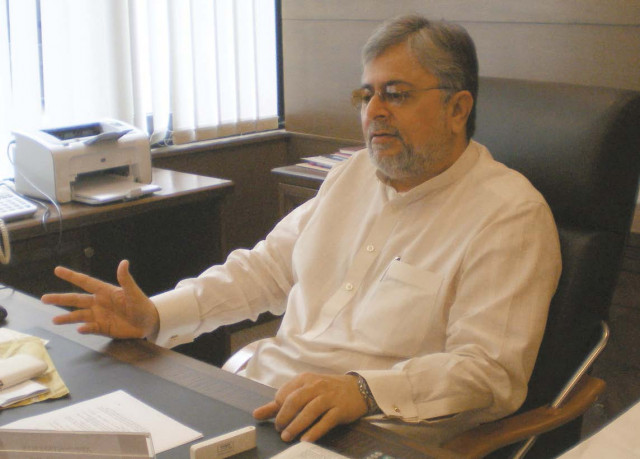Lack of basic infrastructure behind declining textile industry
Pakistani textile exporters will fail to meet demand even if they have more foreign orders.

“If we were to have more orders, we would have to manufacture more and our requirements of water, gas and electricity would obviously rise. All these are most difficult to get in Pakistan,” he said during an exclusive interview with The Express Tribune.
Motiwala attributed the decline and losses of the textile sector to such issues in entirety, adding: “We do not even have proper logistics like good roads. The government needs to work on these to increase the volume of exports.”
“Our country’s potential is $35 billion if we venture into value added products but we continue to export cotton and yarn which do not fetch high prices like value added products,” he explained.
Referring to the textile sector of Bangladesh, he said that the nation had a very good policy and that is what worked for them. He pointed out that the country now had textile exports worth $12 billion.
“Their government’s policies are very clear.” Motiwala went on to say that apart from cash incentives, Bangladesh was also allowed zero duty access into the European Union which meant that international importers got Bangladeshi goods at 13 per cent lower prices than the products made in Pakistan.
We also have an attitude problem, he said. He was of the view that people in Pakistan are not enthusiastic about their work and do not have the energy or vision to target more exports. “Pakistan has found it hard to compete. The reason is that we have failed to come up with aggressive policies.”
“Our government can make foolproof policies, but basically whenever they have tried to give incentives to exporters, the black sheep in our own textile sector misuse these concessions,” he claimed.
When asked why the government does not take action against the culprits, he responded that usually there are sources within the government itself who aid the wrongdoers.
The 15% regulatory duty muddle
When asked about the 15 per cent regulatory duty on yarn exports, which the government eventually had to remove, Motiwala disclosed that he had been part of the initial decision to implement it.
“Exporting the raw material means that the rest of your sectors will suffer. By exporting cotton, you are giving competitors a chance to add value and take away your customers,” he explained.
Moreover, as the other sectors face shortage of raw material, they come under threat of running into losses and being forced into closure. This eventually leads to unemployment and escalating prices.
“We, therefore, imposed the regulatory duties which led to another fiasco of strikes and protests. We had numerous meetings and then decided to do away with it,” he disclosed.
But while the duty was there, there was plenty of cotton available in the country. “I think any duty or quantitative restriction on yarn would definitely help the value added sector,” he added.
Sindh Board of Investment
Motiwala, who is also the vice chairman of the Sindh Board of Investment (SBI), said that he has tried everything within his means to entice investment into the country. However, he pinpointed that to bring in foreign investors, it is important for local businessmen to first invest in their own country.
There is no diversification in the country as local traders hesitate to branch out from their traditional ventures. He said that this was the first time a board was created with the objective of drawing in investment and creating job opportunities.
“I am trying to bring in small and medium investors, especially into rural areas. We have a Sindh development fund that guarantees the feasibility and viability of an investment in rural areas,” he said.
“We have identified 13 different trades and we are trying to bring in some sort of a revolution of industry in the rural areas. We, at SBI, are trying to create a catalyst for investment,” he concluded enthusiastically.
Published in The Express Tribune, August 16th, 2010.





1735506669-0/image-(16)1735506669-0-208x130.webp)













COMMENTS
Comments are moderated and generally will be posted if they are on-topic and not abusive.
For more information, please see our Comments FAQ